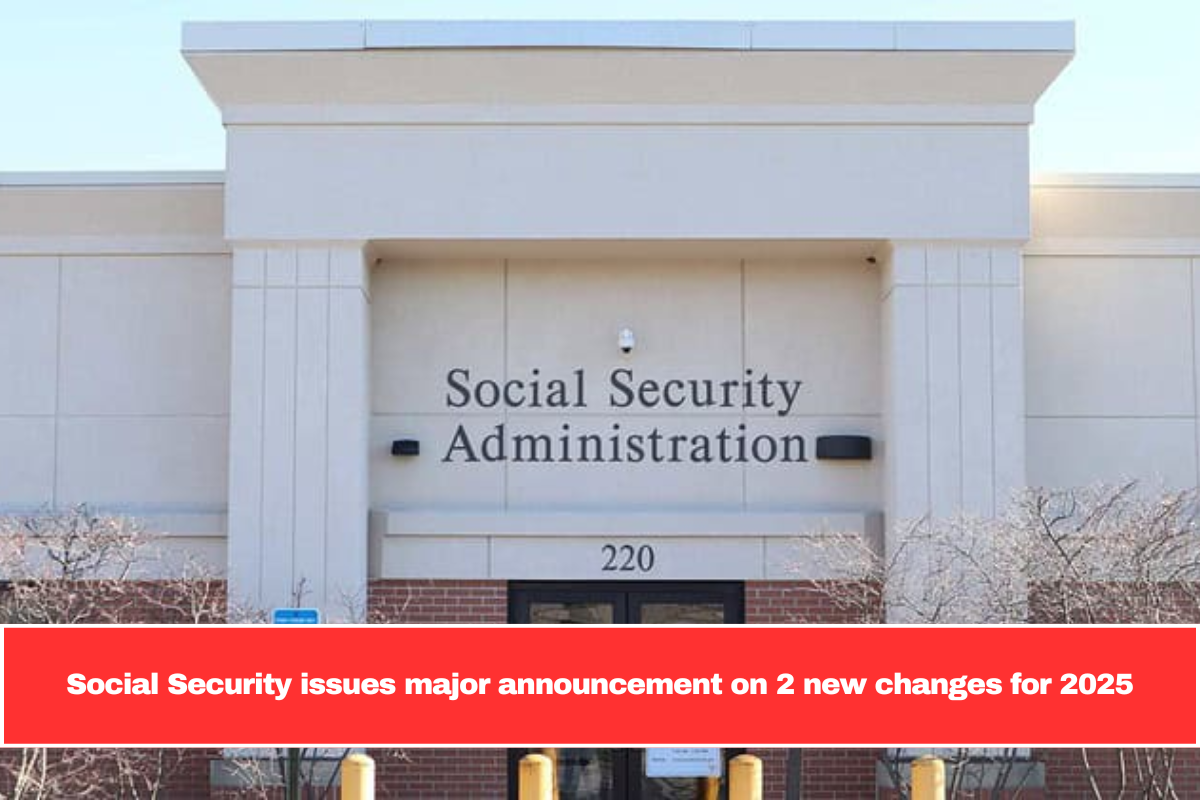There is only one thing that is guaranteed in life, and that is change. Although it may appear that certain systems, such as Social Security, never undergo change, the reality is that they do.
In point of fact, the Social Security Administration (SSA) makes modifications to the program on an annual basis in order to guarantee its lifespan and to ensure that it remains up to date.
The yearly cost-of-living adjustment (COLA) is one of the most well-known modifications that it makes; nevertheless, it is not the only change; rather, it is the change that has the greatest impact on retirees.
In the year 2025, what are some of the most significant changes that will be made to Social Security?
The aforementioned cost-of-living adjustment (COLA) that will be applied to beneficiaries and an increase in the maximum taxable income that current workers pay into the program are the two primary adjustments that will be implemented by Social Security. Both of these changes will have a direct impact on pensioners.
The 2025 Social Security COLA
One of the most important aspects of Social Security, it guarantees that the monthly benefits are in accordance with the current economic conditions and safeguards the spending power of elderly citizens over the course of their lives.
In order to arrive at this figure, the Consumer Price Index for Urban Wage Earners and Clerical Workers (CPI-W) for the third quarter of the previous year is utilized.
Despite the fact that the cost-of-living adjustment (COLA) for 2025 was predicted to be 2.5%, which is lower than the average for the preceding decade (2.6%) and much lower than the previous years (8.7% in 2023 and 3.2% in 2024), elderly citizens and advocacy groups for the collective have expressed dissatisfaction with the decision.
Many people believe that this lower COLA is a positive development since it signals that inflation is decreasing; nonetheless, the majority of people believe that it is insufficient because it will hardly cover the increase in cost that the majority of people have experienced in 2024.
To give you an idea, the average payout for retirees in 2024 is estimated to be $1,907, which, with the application of a 2.5% increase, results in an increase of around $50.
In order to increase the amount that the cost-of-living adjustments COLAs provide, numerous solutions have been proposed. One of the most popular solutions is to use the Consumer Price Index (CPI-E), which is based on the same data as the CPI-W.
However, rather than being weighted toward young workers, it is weighted toward those who are 62 years old or older. This would provide a more accurate representation of the expenses that senior citizens face.

The increase in the maximum taxable income
Social Security is not a program that can be scaled indefinitely, which means that not all income is subject to taxation. This is something that many people are aware of. This is done in order to establish a sense of equity between the income that is subject to taxation and the benefit that is received.
According to the same cost-of-living adjustment (COLA), the maximum amount of income that is subject to Social Security tax in 2024 was $168,600, and it will increase to $176,100 during the year 2025.
The implication of this is that those who earn more than this level will be required to pay taxes on a greater proportion of their earnings.
It is expected that the additional taxes will be paid by both the employer and the employee, given that the majority of people earn their income as workers rather than as freelancers. However, depending on the worker’s wage, this will still result in an increase in taxes of around $465 per year.
Despite the fact that the increase appears to be a negative development at the moment, it puts workers closer to the maximum Social Security benefit that they will receive once they retire.
This benefit is only available to those individuals who have contributed the maximum taxable income to the system for a period of at least 35 years. A high salary will help you obtain a greater payment at the end of your working life, which you may do through healthy savings and retirement accounts.
As an additional benefit, individuals who wait until the age of 70 to claim benefits will receive an even higher payout at the conclusion of their working life.
How to prepare for these changes in 2025?
Some helpful hints that some people might want to take into consideration are as follows:
To complement the modest increase in the cost-of-living adjustment (COLA), retirees should make use of savings mechanisms such as retirement accounts. However, it is important to exercise caution and avoid spending more money than they are able to afford.
Workers with high incomes should: Tax tactics will be your savior; consult with a financial counselor to maximize the amount of money you contribute to Social Security and think about how you can make the most of the benefits that will be accrued in the future as a result of these additional deductions.
Additionally, check the Social Security Administration portal to ensure that your contributions and income are reported accurately. Because of this, you will be able to better correctly forecast your future benefits.















Leave a Reply